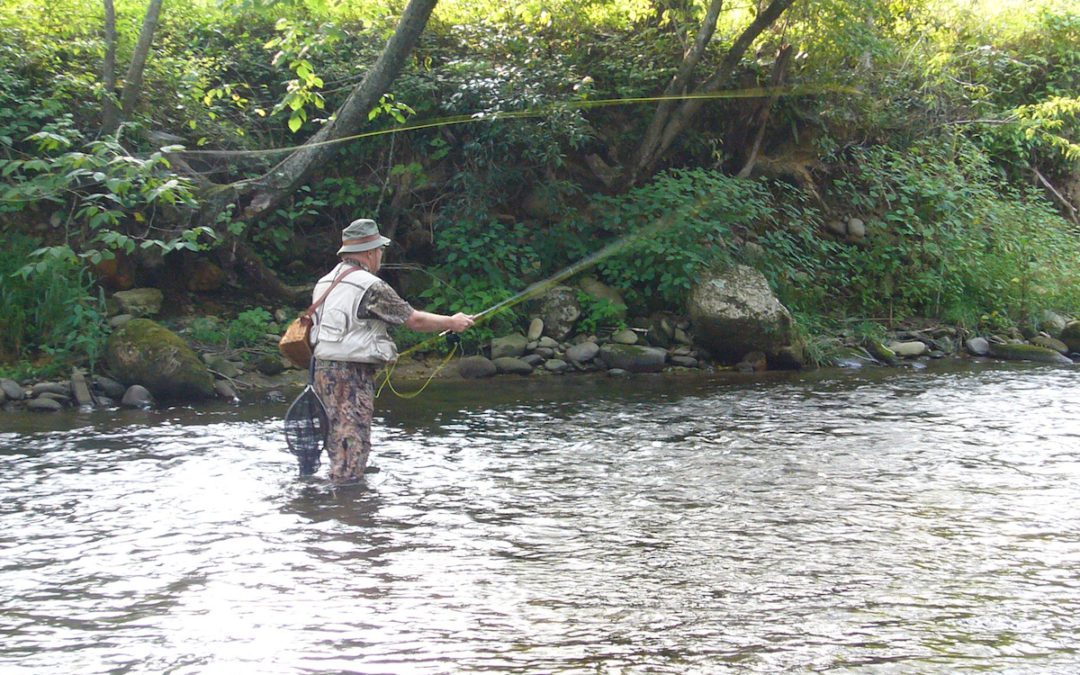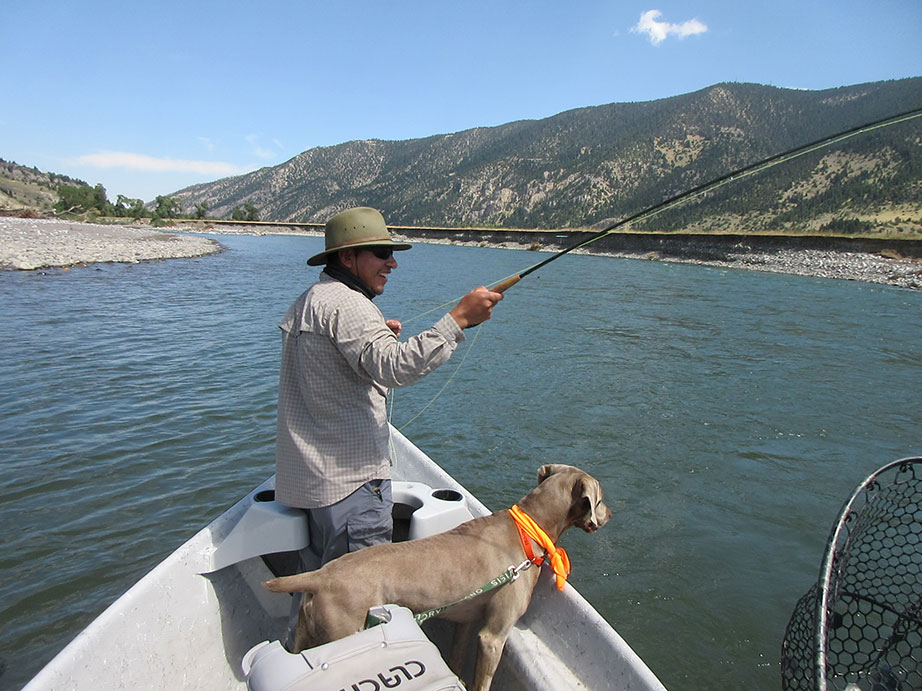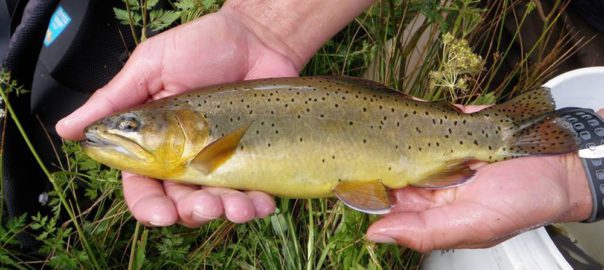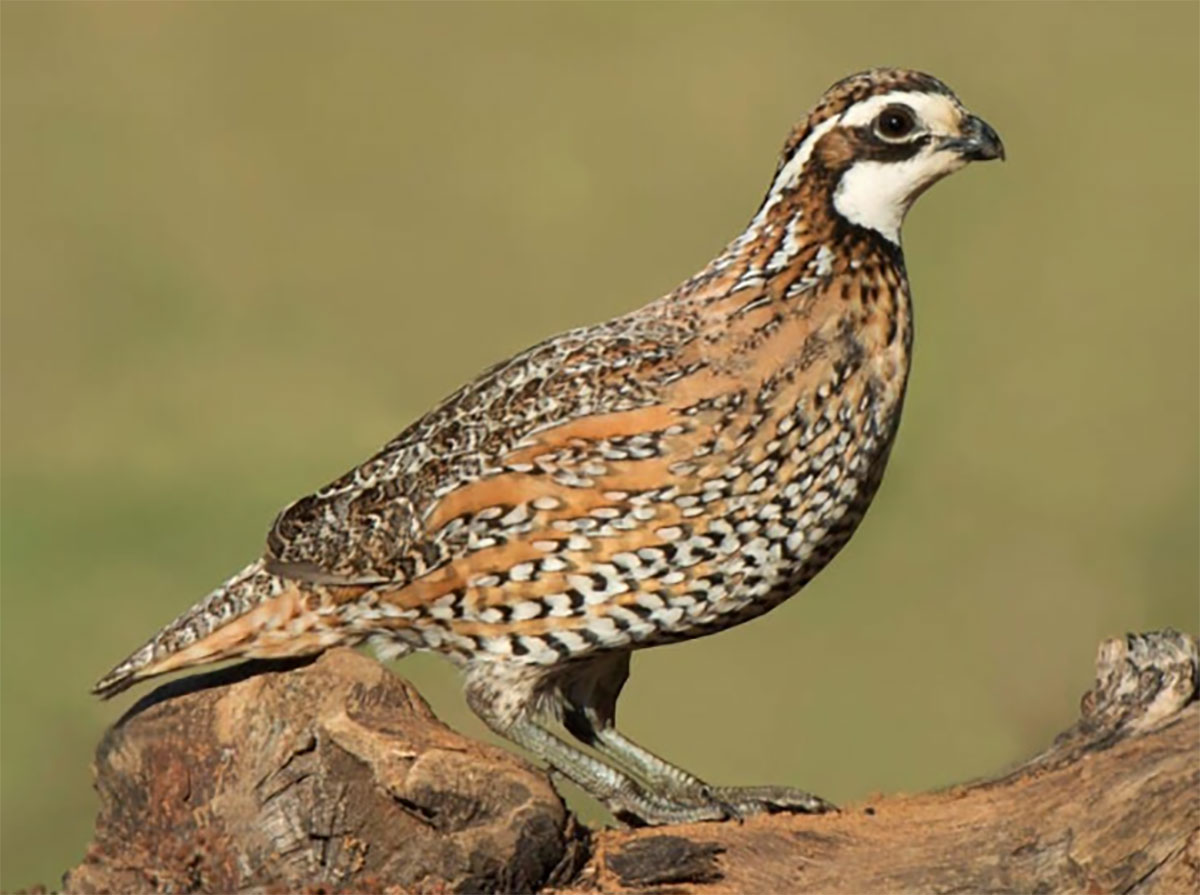From the time I was first able to tag along without completely impeding his fly fishing, Daddy let me accompany him on short after-work outings to nearby trout streams in my native Great Smokies.
My father was a dedicated fly fisherman and one of those wise mentors who closely followed the philosophy advanced by a great outdoor writer of his era, Archibald Rutledge: “It is my fixed conviction that if a parent can give his children a passionate and wholesome devotion to the outdoors, the fact that he cannot leave each of them a fortune does not really matter so much.” Daddy most definitely didn’t leave me a fortune in terms of money or material possessions, but in sharing his love of fly rodding, along with a whole bunch of other outdoor pursuits, he pretty much gave me the world.
From the time I was first able to tag along without completely impeding his fly fishing, Daddy let me accompany him on short after-work outings to nearby trout streams in my native Great Smokies. Within a few years, that companionship expanded to all-day trips on Saturdays or during his rare days off from work. There were also occasional weekend trips combining backpacking camping and fishing. Some indication of how seriously I took those excursions is probably given by the fact that I eagerly trained for them in advance by sleeping on the floor rather than in bed.

When I was nine or ten years of age, Daddy gave me my first fly rod. Up until that point my angling equipment had been limited to sturdy cane poles, although those humble instruments of the fisherman’s world served me quite nicely. With them I caught a bunch of bream and knottyheads, a few trout and some catfish. Among the latter was a whiskered behemoth that was pulling me into Fontana Lake until I managed to straddle a handy stump and use it for leverage. Once that catfish had been landed, Daddy always swore my first words were “Boy, catching a big one sure makes a fellow’s legs shake.” I don’t know whether that was indeed the case, but if so, it seems fair to conclude the episode offered an early indication of a pronounced penchant to tell sporting tales.
My first fly rod, and it was the only one I owned until I was in my late twenties or early thirties, was a simple but supremely serviceable hand-me-down made by South Bend. It originally came with two tips and included a primitive click drag Pflueger reel and line that had to be dried after every outing and cleaned and greased with regularity. The line wasn’t silk but for all the care it required it might as well have been. Over time I broke one tip and repaired it in a rough fashion, rewrapped two or three of the snake guides in similarly inept exhibits of craftsmanship, wore the bottom of the cork handle out through foolishly embedding the point of flies in it when walking trails to and from my fishing destinations, and in many senses abused the outfit.
That neglect notwithstanding, the little seven-and-a-half foot bamboo rod made of Tonkin cane served me nicely. With it I learned to cast, being completely self-taught other than careful observation of the techniques used by Daddy and some of his buddies. It was my companion for my first trout on a fly, a keeper barely meeting the requisite seven-inch length caught when I was nine years old. Honesty compels me to admit I never saw it hit the dry fly and hung the fish strictly by accident. It was obviously a trout deserving of removal from the gene pool, and in a fashion that would have pleased Momma, I insisted on according the little fish Mom’s preferred approach to catch-and-release; namely, release to hot grease. It was part of my backcountry supper that evening, the first of countless trout I’ve caught and eaten over the decades.
By the time I had reached the age of twelve, my skills had advanced a good bit and my parents showed the sort of trust you would never encounter in today’s world by allowing their son to make day trips on his own. Frequently I fished with a good buddy, Bill Rolen, who was the son of a ranger. Sometimes his father would drive us into gated-off areas of the Great Smoky Mountains National Park, leave us for the day, and pick us up come evening. It was a grand arrangement. More often than not, however, I fished by myself.
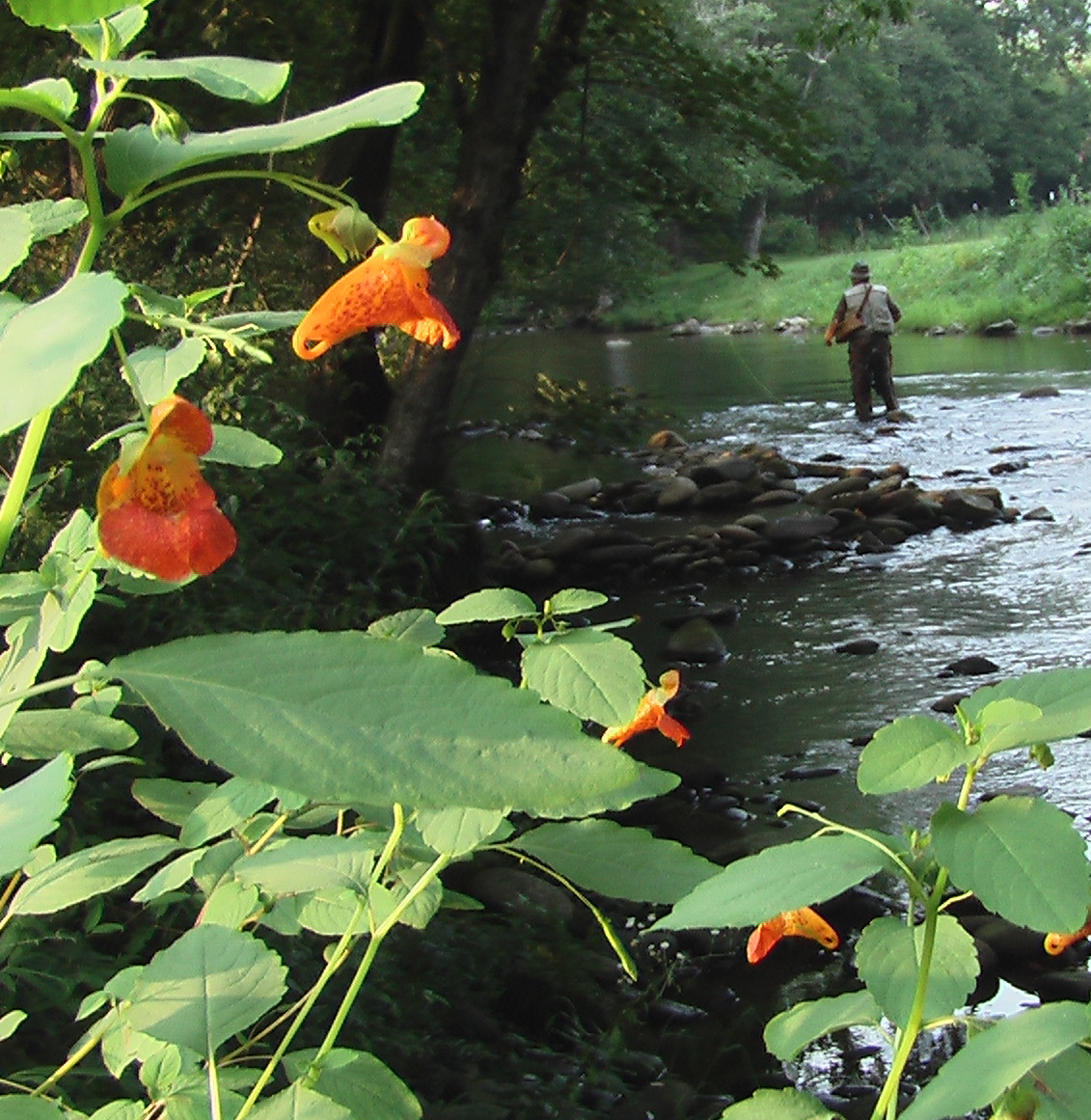
My destination of choice was a small stream called Indian Creek, a place that was within hard walking or easy biking distance of home. It was the location where fabled sportsman Mark Cathey, a legendary figure constantly mentioned by locals and about whom I wrote in the Daily a couple of years back, lived prior to the creation of the Park. He was often in the back of my mind when I fished, and three important moments in my later life centered on this lean, indefatigable icon of mountain hunting and fishing.
One came when I was honored by being asked to give the acceptance speech when Cathey was among the inaugural inductees into the “Legends of the Fly” Hall of Fame sponsored by Southern Trout Magazine, a popular online publication. The second came when my brother discovered, through genealogical research, that we were distant cousins of Uncle Mark, as he was popularly known in his later years. That in turn led to yet another in a long series of visits to his tombstone in the Bryson City Cemetery. Incidentally, it bears what has to be one of the finest epitaphs imaginable:
Mark Cathey, beloved hunter and fisherman,
Was himself caught by the Gospel hook.
Just before the season closed for good.
On that particular visit to the marker I noticed something that had escaped me in all my countless previous sojourns at the site, or possibly my brother noticed the coincidence. Uncle Mark’s birthday was January 28, the same date on which I was born. The years of our respective arrival in the Smokies were 1871 and 1942, and that shared date of birth formed the third in a triumvirate of my delightful links to the man.
Cathey’s Indian Creek home water, which included a nice pool bearing his name, was small and overgrown. The former characteristic made it easy for me to wade while the latter feature guaranteed that most anglers avoided the treacherous embrace of rhododendron and other vegetation lining the stream’s banks and forming a dense canopy over its pools. It was there I caught my first limit of trout; learned many of the basics of how to fish small, tight streams; and underwent most of my fly-fishing apprenticeship. Along with Deep Creek, which it feeds, Indian Creek is and ever shall remain not only my home water but the stream of my dreams.
My teenage years saw me progress rapidly in fly fishing ability. I became more observant in a lot of ways, making mental notes on the kinds of cover likely to hold trout, favored hangouts for larger fish, fly patterns that seemed to work best, how to avoid drag, means of producing longer casts and much more. As an observant angler I also was constantly vigilant not only for any and all indications of the presence of fish but for flies previous anglers had left behind thanks to wayward casts. A trout fly cost two bits at the local fly shop or $2 a dozen if bought directly from a masterful husband-and-wife pair of local tiers, Fred and Allene Hall. That was serious money when a gallon of blackberries brought a quarter, when caddying eighteen holes on the local golf course netted a $1.25, and when lawn mowing jobs averaged at best fifty cents an hour.
Accordingly, I became an avid “hunter” of flies that had been broken off over deep pools, left dangling out of reach in streamside trees, or otherwise lost. If necessary, I would swim to examine a tell-tale piece of tippet dangling from a rhododendron bush and, should I perchance spot a fly high up in a tree, I carried a thin, strong piece of cord for just such situations. With a rock tied to one end, more often than not I could throw the cord over the limb holding the fly and either pull the branch within reach or break it off. As for unwanted visits of my own flies to trees, and I was a master at what Daddy sometimes laughingly referred to as “fishing for squirrels,” I would go to extraordinary lengths to retrieve them. A fly found was a quarter earned and one of my own rescued was two bits saved.
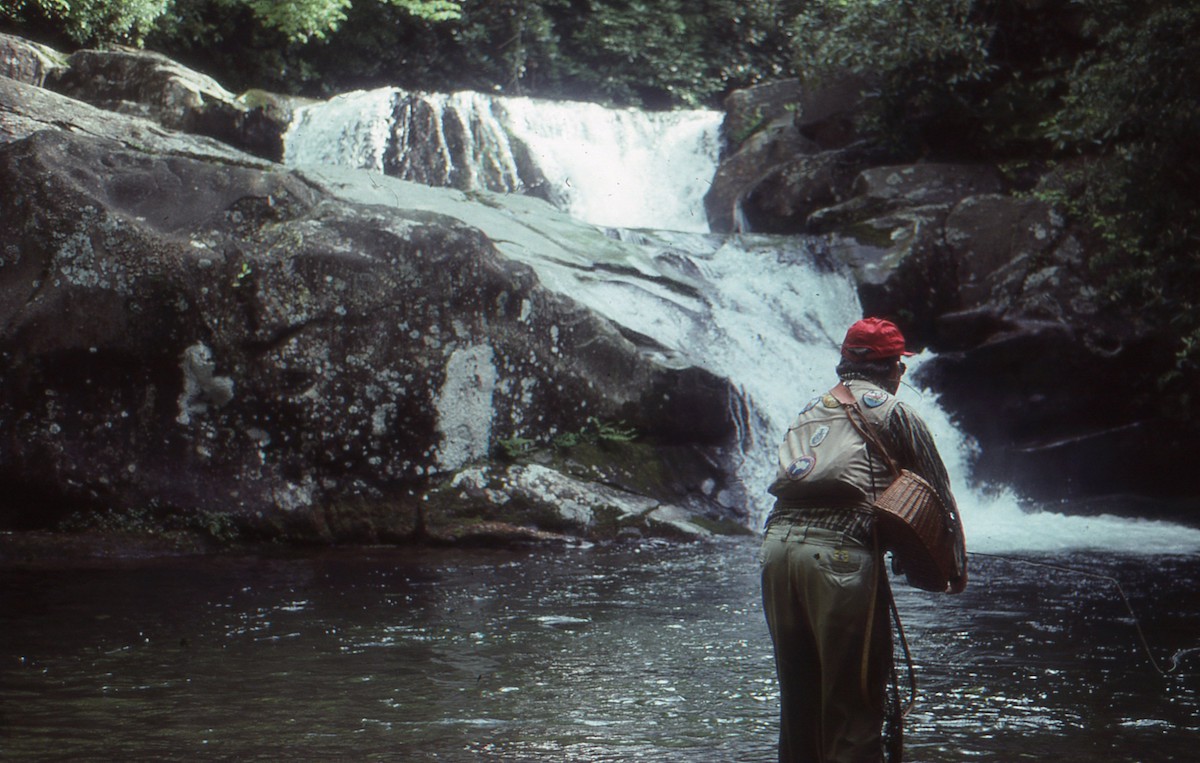
By the time I completed high school I think it fair to say I was an accomplished fly fisherman, at least by Smokies standards. Those standards, incidentally, are quite high. As I learned decades later when I made my first junket to the fabled waters of Montana as a guest of that state’s tourist agency, if you are proficient with a fly rod in the Appalachian high country you can catch trout almost anywhere. I was scared to death I would prove to be a study in ineptitude in the storied setting for the Big Horn, Big Hole, Madison, Missouri, Clark’s Fork and so many other famous streams. By the end of my first half hour on the water in Montana I knew better. In that short passage of time, with a number of fine fish brought to hand, my worries on that score were at an end.
As a teenager I caught my first true trophy trout, increasingly enjoyed moments when the heft of my creel exceeded that of Daddy’s and even, on a few occasions, those of other fly-fishing heroes of my youth. I spent hours without end in the water, sometimes leaving home before daylight and straggling back, dog-tired, at dusk. But those days astream formed a prelude to a lifetime of fly rodding that has enabled me to cast lines in Alaska; most if not all the provinces of Canada; New Zealand; South Africa and streams without number in Montana, Idaho, California, Wyoming and elsewhere in the American West. Small wonder Daddy always called me “a fly fishing fool.”
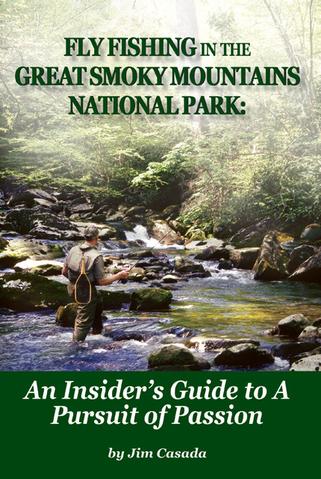
In celebration of the 75th anniversary of the nation’s most popular park, this 448-page book features separate chapters with maps and photos on every major stream in the park. Shop Now

